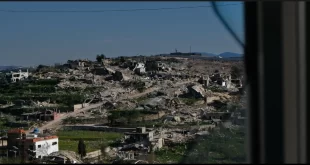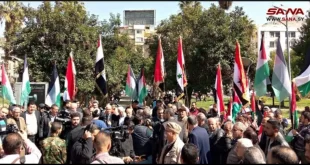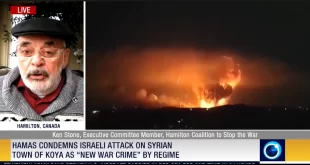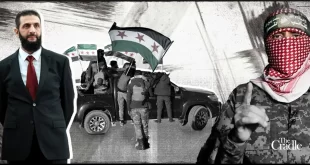June 20, 2017, RT Question More
According to the Syrian statement, the plane was carrying out operations against Islamic State (IS, formerly ISIS/ISIL) in the countryside around Raqqa when it was targeted, leading to a crash and the loss of the pilot, who is currently missing.
“This attack comes at a time when the Syrian Arab army and its allies are advancing in the fight against ISIS terrorists who are being defeated in the Syrian desert in more ways than one,” the statement read.
The statement added that although such attacks seek to undermine the Syrian armed forces’ struggle against terrorism, they will not be deterred in fighting for stability and security in the Syrian Arab Republic.
The downing of the Syrian warplane, an Su-22, was confirmed by an official press statement from Operation Inherent Resolve, the US-led international task force against IS, which accused the Syrian government of targeting fighters from the Syrian Democratic Forces, a Kurdish-led militia.
“At 6:43pm, a Syrian regime SU-22 dropped bombs near SDF fighters south of Tabqah and, in accordance with rules of engagement and collective self-defense of Coalition partnered forces, was immediately shot down by a US F/A-18E Super Hornet,” the statement read.
The statement added that its mission is to defeat ISIS in Iraq and Syria and that the Coalition does not seek to “fight Syrian regime, Russian, or pro-regime forces partnered with them, but will not hesitate to defend Coalition or partner forces from any threat.”
This is not the first time that the US-led intervention in Syria has led to standoffs and violence against pro-government forces. In September 2016, a coalition airstrike on Deir ez-Zor killed over 60 Syrian soldiers while in April 2017, US President Donald Trump ordered a Tomahawk missile strike on the Shayrat airbase, ostensibly in retaliation for the use of chemical weapons by the Syria government, though no concrete evidence of this has emerged.
Earlier in June, the US deployed several High Mobility Artillery Rocket Systems (HIMARS) in southern Syria, close to the border with Jordan. Russian Foreign Minister Sergey Lavrov said the presence of the rocket launchers cannot be justified by a need to fight Islamic State terrorists, as IS forces are not active in the area. Instead, their presence threatens the cooperation between the Syrian government and their partners in Iraq.
‘US trying to draw red lines for Syria’
Syria-based journalist Alaa Ebrahim told RT he believes that, by downing the Syrian jet, Washington is aiming to redraw “red lines” in the Syrian conflict and show that it won’t tolerate the involvement of the Syrian government’s armed forces in the liberation of Raqqa.
“The Americans don’t want the Syrian army to advance towards Deir ez-Zor, they don’t want the Syrian army to actually be present as part of the operation to retake Raqqa or to take any part of the Raqqa province,” Ebrahim said.
“The US is trying to draw boundaries in the Syrian conflict and red lines for the Syrian army not to cross them,” he added.
The journalist believes that the Syrian Army might go to great lengths to challenge the US strategy in Raqqa, as there are considerable concerns as to the outcome of the battle should the city eventually fall into the hands of the US-backed Kurdish-led SDF forces.
Ebrahim speculated that when IS is pushed out of Raqqa, the terrorists will be allowed “a safe way out and those fighters will have only one choice, to go to Deir ez-Zor and to try to take the city from the hands [of the Syrian Army].”
Such a relocation would put an additional strain on the Syrian armed forces trying to break the siege of the city that has been ongoing for over two years, he said, adding that Sunday’s downing of the plane is “part of the ongoing escalation” that has been on the rise in Syria for the past several months “since the US carried its first airstrike against pro-government forces.”
 Syria Support Movement solidarity with the Syrian people
Syria Support Movement solidarity with the Syrian people




